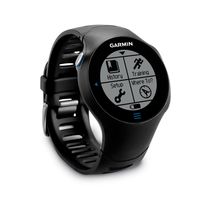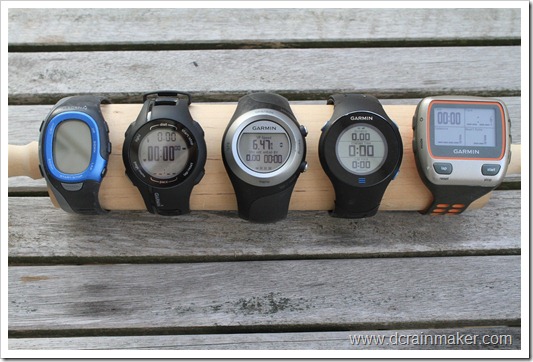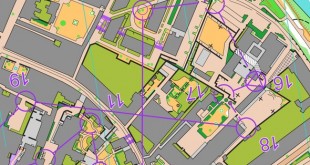 Garmin today released a new Forerunner watch which will probably be the favourite choice for orienteers for o-technical analysis. The 610 will be better than the 405/410/310 XT for o-technical analysis due to reintroduction of the 1-second recording mode. Also the new touchscreen technology seems to be better than the touch bezel of the Forerunner 405/410.
Garmin today released a new Forerunner watch which will probably be the favourite choice for orienteers for o-technical analysis. The 610 will be better than the 405/410/310 XT for o-technical analysis due to reintroduction of the 1-second recording mode. Also the new touchscreen technology seems to be better than the touch bezel of the Forerunner 405/410.
– In the case of the FR610, it all seemed to flow pretty well
The 405/410/310 XT watches do only have a “smart recording mode” were GPS position is stored every 3-6 seconds on average, whereas the good old Forerunner 305/205 has a 1-second recording mode which made it a favourite among many orienteers. 1 second recording interval makes it possible to do more accurate analysis as position is sampled every second, and is therefore a requested feature among top orienteers. The new Forerunner 610 gives you the nice ANT+ technology and a slimmer watch – and you still get the 1 second recording interval.
See also: GPS Analysis for Orienteering: All the Basics!
Touch screen instead of touch bezel
Another change for the Forerunner 610 compared to the 405/410/310 XT is a new touchscreen. This touchscreen technology is said to be far better than the touch bezel of the 405/410 – and it should also work very well with gloves/in rain. It remains to be seen how well the touchscreen works for orienteering activities, but this sure looks promising. Here is what DC Rainmaker says about the touch screen:
GPS analysis for orienteering: The basics
Tommorrow I will give an an overview over different GPS units in a post about the basics of GPS analysis for orienteering over at o-training.net – discussing a bit more about the differences between the different Garmin watches as well.
- Full in depth review, Forerunner 610 at DC Rainmaker – highly recommended
- Information about Forerunner 610 at the Garmin Blog
Below you see a comparison of the Garmin Forerunner 610 with other Garmin watches (image from DC Rainmaker). Looking from left to right, the watches are the FR60, FR110 (FR210 is identical body), FR405 (FR410 is identical body), FR610 and finally the FR310XT.

Update about compass interaction: No problem according to this entry at Attackpoint by user ceeej:
[…] I can report that the magnetic aspect is very minimal. The watch had to be placed right next to my compass to have an effect. I think only the contacts of the watch are magnetized whereas the whole of the charging cradle is. As I wear my watch on the opposite arm I’m not too worried about it but I’d probably recommend testing with your own compass if you use the same arm.
I like the touch screen, it is much better than the bezel on the 405 and it really does work with gloves on which means the 610 is actually practical for cycling with. However, the ‘lock’ for the screen can not be turned on like on the 405, it comes on after a period of inactivity so wouldn’t be on if you were recording an orienteering run. Having said that the touch you have to give the screen is fairly firm, I haven’t managed to set it off with clothing yet which is what the 405 bezel used to do, will report back after I’ve done some Orienteering with it.
 World of O News
World of O News




DCRainmaker writes:
Outside of the charging clip, we’ve got the watch itself. The back is metallic (and magnetic)…
Anyone having the chance to test if the magnetic back affects a compass, please post your experience…
Good question, Michael. I’ll pass it on to Ray over at DC Rainmaker who has a test unit. I would think the distance is large enough for it to be OK, but it would definitely be a showstopper for orienteers..
I would guess that the watch itself isn’t magnetic, just with a back plate made of a grade of steel that the magnet in the charger can attach to.
There are multiple types of stainless steels, the normal type uses chrome and nickel and isn’t magnetizable, while ferritic steels would work well here.